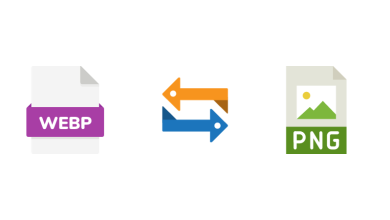
The role of Environment, Health, and Safety (EHS) is rapidly evolving with the rise of artificial intelligence, which is transforming how you protect your workforce and enhance workplace safety. AI offers unprecedented opportunities to streamline safety protocols, predict hazards, and respond more effectively.
Imagine safety inspections conducted by drones with advanced sensors, identifying risks that might go unnoticed. AI analyzes this data in real-time, providing actionable insights to prevent accidents before they happen—this is no longer a futuristic dream but a growing reality.
AI also aids in compliance management by automating documentation and reporting, making your job easier and more efficient. By leveraging these technologies, you can safeguard employees, boost productivity, and reduce costs. As you continue reading, you’ll learn how to harness these AI innovations to revolutionize your EHS practices.

Bridging AI and EHS: A Strategic Overview
AI’s integration into Environmental Health and Safety (EHS) is transforming how organizations detect risks, ensure compliance, and protect employees. You’ll discover how AI enhances strategic EHS operations, offering both significant benefits and unique challenges.
Understanding EHS in the AI Era
In today’s AI-driven world, EHS practices are evolving rapidly. AI technologies analyze vast amounts of data, identifying hazards and predicting incidents before they occur. For instance, machine learning algorithms sift through safety reports and sensor data to pinpoint risk patterns.
AI tools automate routine tasks like inspections and reporting, freeing up your time for more critical activities. They also deliver real-time updates, ensuring compliance with ever-changing regulations.
Strategic Benefits of AI
AI offers a range of strategic advantages for EHS management. Early hazard detection is one of the most significant benefits. AI systems continuously monitor environments, instantly flagging potential risks and providing actionable insights.
Another key advantage is data-driven decision-making. With AI, you can utilize predictive analytics to improve safety protocols and reduce incidents. Cost savings also come into play, as AI automates labor-intensive tasks, cutting down on man-hours and reducing errors.
Enhanced training programs are another benefit. AI-driven simulations prepare employees for real-world scenarios, improving readiness and response times. Embracing AI in EHS means increased efficiency, better safety records, and a more proactive approach to risk management.
Challenges and Solutions
While AI has immense potential, it also poses challenges. Implementing AI technology can be costly, requiring significant upfront investment in both hardware and software. However, the long-term savings and improved safety metrics often justify this expenditure.
Data privacy concerns are another issue. Ensuring that AI systems comply with privacy regulations is crucial. You can mitigate this by adopting robust cybersecurity measures and staying updated on legal requirements.
Skill gaps might also arise as your team adapts to new technologies. Offering comprehensive training programs can bridge this gap, helping your employees make the most of AI tools. Addressing these challenges head-on will pave the way for a safer, smarter EHS landscape.

Innovative AI Technologies Transforming EHS
Emerging AI technologies are significantly enhancing safety protocols. Predictive analytics, advanced monitoring systems, and mobile applications are at the forefront of this transformation.
Predictive Analytics for Incident Prevention
Predictive analytics systems utilize vast amounts of historical EHS data to identify patterns that could indicate potential risks. By analyzing trends, these systems can forecast incidents before they occur, offering you a proactive approach to safety.
Predictive models use machine learning to constantly improve their accuracy. They can help you allocate resources effectively, ensuring high-risk areas receive the attention they need. This technology also supports compliance by identifying and addressing potential safety violations beforehand.
Enhanced EHS Monitoring Systems
Enhanced EHS monitoring systems leverage AI to provide real-time insights into workplace conditions. Sensors and cameras collect data on variables like air quality, temperature, and equipment status, which is then analyzed by AI to detect anomalies.
For instance, an AI warehouse safety solution can continuously monitor and assess potential hazards in storage areas, ensuring that safety standards are met without human oversight.
These systems can immediately alert you to potential hazards, allowing for quick mitigation. Automated reports generated by these systems help you keep detailed records, making it easier to demonstrate compliance with regulatory standards.
Mobile EHS Applications
Mobile EHS applications bring safety management to the palm of your hand. These apps use AI to offer features like real-time updates, risk assessments, and incident reporting, ensuring you are always informed.
Workers can report hazards instantly using their mobile devices, speeding up the response time. With AI-driven insights, these applications can guide you through corrective actions, ensuring uniform safety practices across the board. They also offer analytics dashboards, giving you a comprehensive view of safety performance.
Case Studies: AI in EHS Success Stories
Innovations in AI are transforming Environmental Health and Safety (EHS) across various sectors. These case studies demonstrate specific advancements and their remarkable impact.
Manufacturing Sector Innovations
AI technologies have greatly enhanced safety in manufacturing. Sensor-equipped wearables now alert workers to hazards, while predictive analytics identify patterns to prevent accidents. Machine learning refines safety protocols and training based on this data.
These innovations have notably reduced workplace injuries and improved compliance. For instance, a car manufacturing plant cut injuries by 30% in one year using AI-driven predictive maintenance.
Healthcare Industry Breakthroughs
The healthcare sector benefits tremendously from AI in EHS. AI systems now monitor hospital environments, ensuring sterile conditions.
Voice recognition aids in documenting safety incidents more efficiently, saving time. AI-driven cameras and sensors flag potential contamination risks in real-time. A prominent hospital reported a 25% decrease in infection rates due to these AI systems.
Additionally, these technologies streamline compliance with health regulations, ensuring patient and staff safety.
Environmental Impact Reductions
AI is crucial in minimizing environmental footprints across industries. Advanced monitoring systems use AI to detect pollutants and predict environmental hazards. AI-driven analytics enhance waste management processes, optimizing recycling efforts.
In one case, a chemical plant reduced its hazardous waste output by 40% over two years with AI-enhanced monitoring and process adjustments. These technologies not only protect the environment but also ensure sustainable and efficient operations.
Looking Ahead: The Road Map for EHS Excellence
Emerging AI technologies are shaping the future of Environmental, Health, and Safety (EHS) in remarkable ways. As you consider the next steps, it’s crucial to focus on how to integrate these technologies effectively.
1. Enhanced Data Analytics
AI-powered data analytics will play a pivotal role. By leveraging real-time data, you can predict and prevent incidents before they happen. This proactive approach can save lives and reduce costs.
2. Predictive Maintenance
Implementing predictive maintenance systems can significantly improve your equipment’s longevity. AI algorithms can forecast equipment failures, allowing you to address issues before they escalate.
3. Virtual Reality (VR) Training
VR offers immersive training experiences. Employees can practice handling hazardous situations in a safe, controlled environment. This not only improves their skills but also their confidence.
4. Wearable Technology
Smart wearables are becoming common in many industries. Devices like smart helmets and wristbands can monitor vital signs and environmental conditions. This real-time feedback enhances safety on the ground.
5. Automated Reporting
Reducing the administrative burden is essential. AI-based automated reporting systems can compile data, generate reports, and ensure compliance effortlessly. This frees up your team to focus on more critical tasks.
6. AI-Driven Audits
AI can streamline the audit process. Machine learning algorithms can quickly analyze compliance data, identifying potential risks and areas for improvement. This ensures you stay ahead of regulations without the manual grind.
As you look ahead, integrating these technologies could be the key to achieving EHS excellence. Embrace the possibilities and lead your team into a safer, smarter future.
Conclusion
Integrating AI into EHS practices represents a major advancement in workplace safety and efficiency. AI-driven tools like predictive analytics, monitoring systems, and mobile apps allow for proactive hazard management and streamlined compliance, creating a safer work environment.
As AI evolves, its impact on EHS will grow, driving further innovation and positioning your organization as a leader in safety and sustainability. The future of EHS is smarter, safer, and more efficient than ever.





